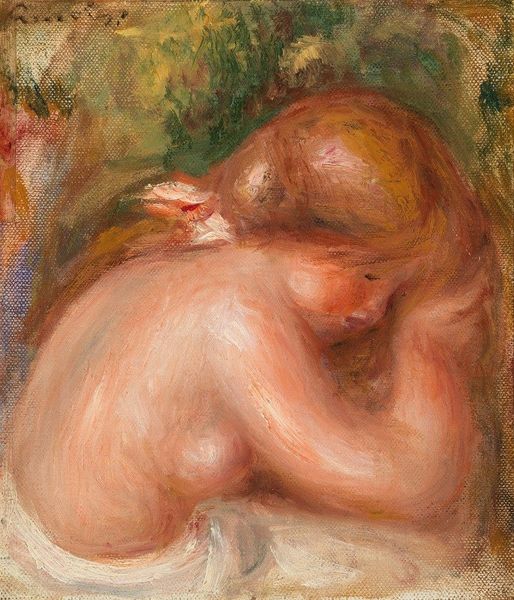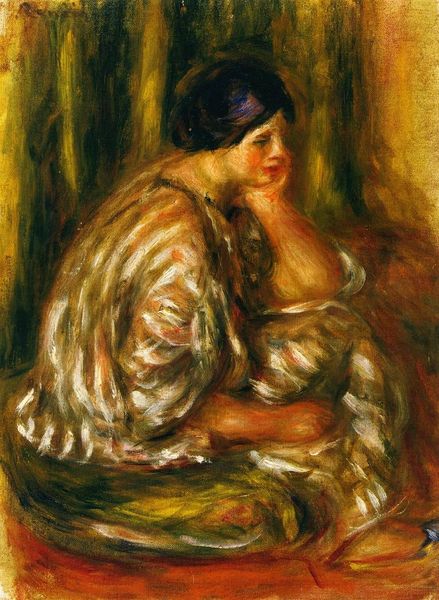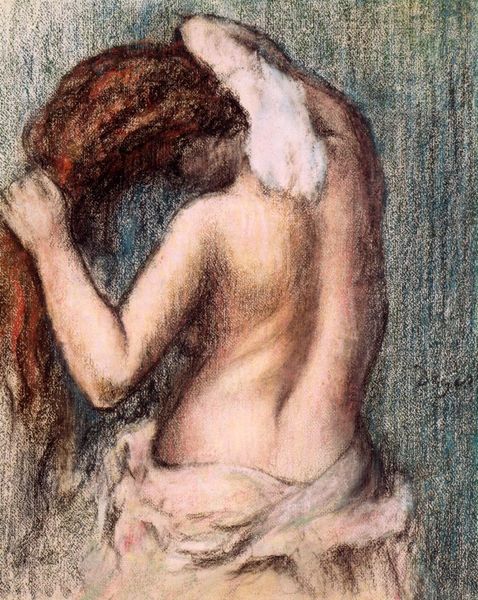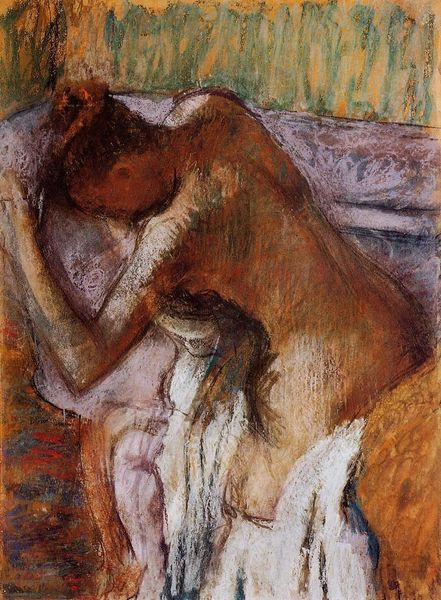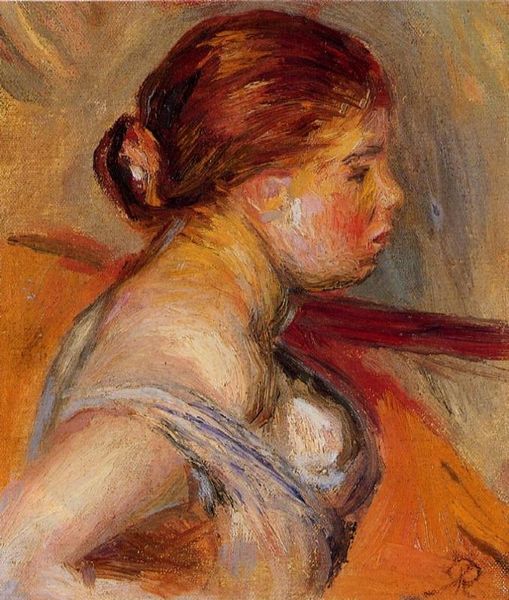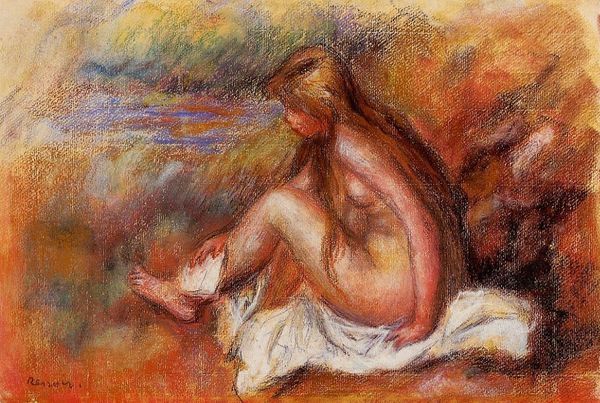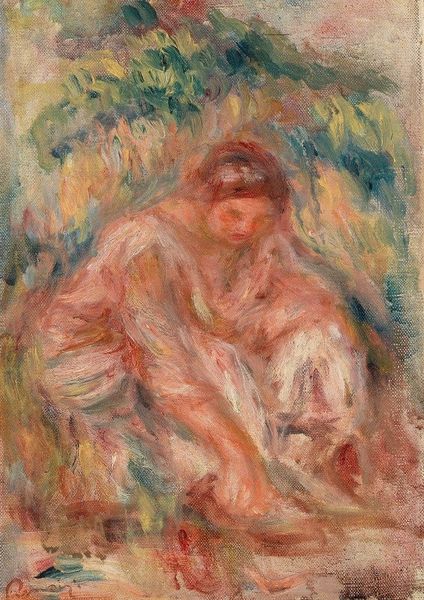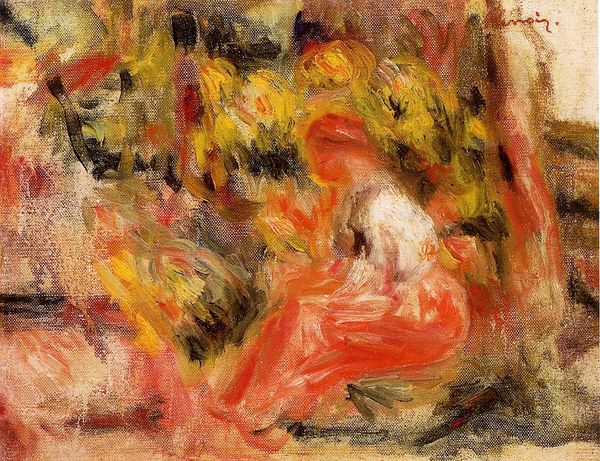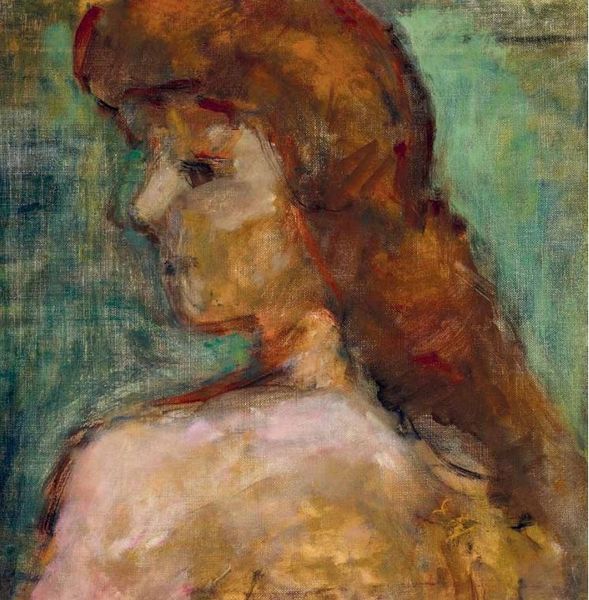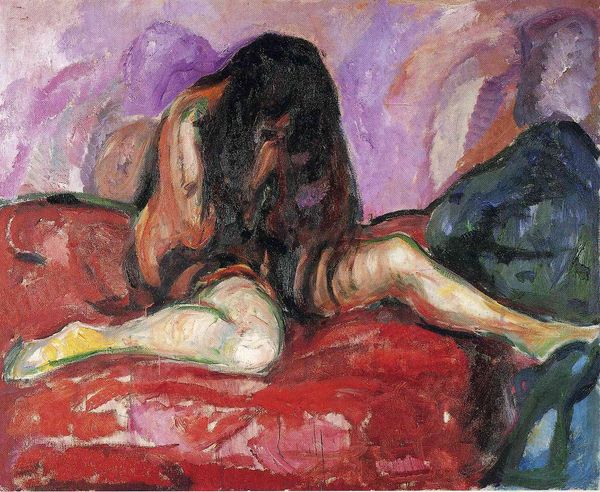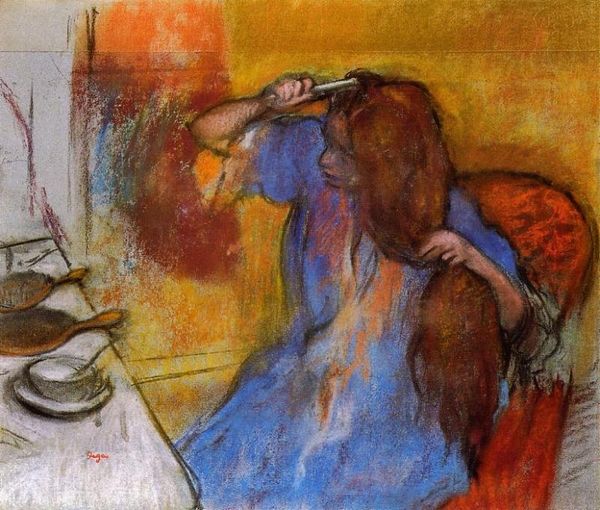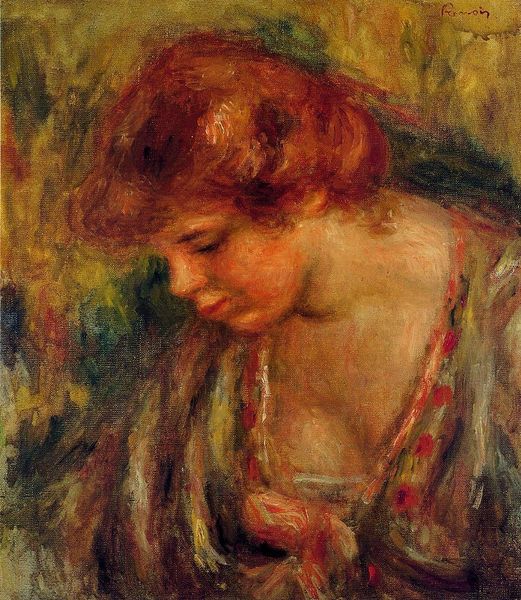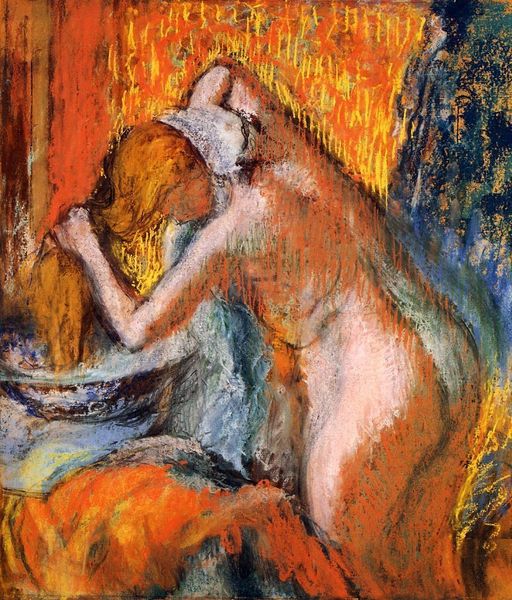
Copyright: Public domain
Editor: This is Renoir's "Woman Leaning on Her Elbow," painted in 1918 using oil paint. It feels very intimate, almost as if we’re intruding on a private moment. There’s a softness in the colors and the pose that’s really striking. What's your interpretation of this piece? Curator: Well, to me, Renoir's late works like this, painted towards the end of World War I, represent a turning inward. The flamboyant public displays of earlier Impressionism are replaced by domestic scenes. The "genre-painting" theme signifies an increasing interest in representing mundane moments, hinting at a yearning for normalcy amid widespread social upheaval and the horrific realities of total war. Do you notice the absence of overt references to these dramatic socio-political shifts? Editor: I see what you mean. It's almost as if he’s deliberately avoiding the war. There's no hint of the outside world here, just the woman and her quiet contemplation. Curator: Exactly. The politics of imagery here lie in its seeming absence. The work isn't *about* the war directly, but it certainly wouldn’t exist in this specific form without the atmosphere the war produced. How does this knowledge change the mood you described at the beginning? Does the “intimacy” you mentioned take on new meanings in the context of trauma, national reconstruction, and the need to reclaim personal agency? Editor: That’s a great point. Thinking about the historical context, the intimacy feels almost fragile, like a refuge. It's less about just capturing a pretty picture and more about the emotional impact. I hadn't considered that before. Curator: That's the beauty of looking at art through a historical lens. The act of deliberate retreat is a powerful political statement in itself. I’m so glad we could reconsider this painting together!
Comments
No comments
Be the first to comment and join the conversation on the ultimate creative platform.
